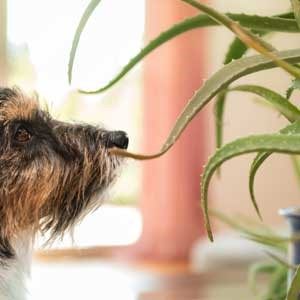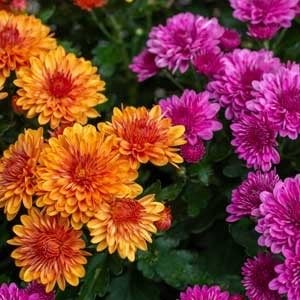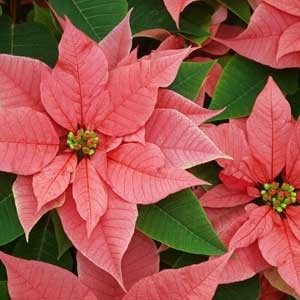Houseplants and outdoor gardens can provide a myriad of benefits to our health and happiness. They not only improve air quality and boost humidity, but they can also lower our stress and reduce fatigue. Whether you have a green thumb or easily forget to tend to your plants for weeks, there is something for everyone.
Not all plants are harmless, however. While some are more toxic than others, consumption of any plant material has the potential to cause gastrointestinal upset, vomiting, and diarrhea for both dogs and cats. It’s important to choose your indoor and outdoor plants carefully to avoid anything that may be poisonous to your furry friend. So, which toxic plants should you steer clear of? According to experts at ASPCA and VCA Animal Hospitals, here are some plants to keep away from pets:
Table of contents

Aloe Vera
Often used by humans for its medicinal properties, aloe is an incredibly popular plant to keep around the house. Not only is it a beautiful plant, but the inner gel can treat scrapes and burns. Be careful keeping aloe within reach of pets, however—considered moderately toxic to both dogs and cats, it can be harmful if ingested. Chewing on the plant can lead to vomiting, diarrhea, and lethargy. In severe cases, vomiting and diarrhea can result in life-threatening dehydration.
Amaryllis
This beautiful flower is a favorite holiday gift, making any space festive. Amaryllis is dangerous to pets, though, and can cause stomach pain, drooling, tremors, diarrhea, and vomiting for both dogs and cats when ingested. The plant’s primary toxin, lycorine, can also cause depression and hypotension. While all parts of the plant are considered toxic, amaryllis bulbs contain the highest concentration of toxins and are therefore particularly dangerous.
Azalea (Rhododendrons)
While they are mostly used in outdoor landscaping, azaleas can sometimes also be used indoors to create miniature bonsai trees. Azaleas contain grayanotoxin, a harmful toxin for dogs, cats, and other animals that can result in a wide variety of symptoms. If ingested, animals can experience vomiting, diarrhea, and even comas. The amount of grayanotoxin your furry friend ingests determines the severity of their reaction. All parts of the plant are toxic, so watch out for the pups who love to chew on branches!
Alocasia
With large green leaves, alocasia plants are a houseplant favorite. While beautiful, they can cause irritation or even burn the mouth, lips, and tongue of both cats and dogs. Keep this plant away from pets, or you may find them vomiting or suffering severe salivation.

Chrysanthemum
These brightly colorful fall flowers contain several toxic components that can cause illness in pets, including cats, dogs, and horses, if ingested. Fortunately, chrysanthemums are only considered mildly toxic, so symptoms of poisoning should be fairly minimal as long as your pet didn’t ingest too much. If ingested, you may notice vomiting, diarrhea, drooling, loss of coordination, and dermatitis.
Dumb cane
These green leaves are one of the most common houseplants. Pet owners should be cautious about keeping these plants within reach, as they contain oxalate crystals and other toxic enzymes. Chewing the leaves or stems can result in your pet experiencing a burning sensation in their mouth, a reduced appetite, vomiting, drooling, and even trouble swallowing and or breathing.
Easter lily
These popular springtime gifts are one of the most toxic houseplants for cats. For whatever reason, cats are especially sensitive to lily poisoning. While the toxic mechanism is unknown, lilies cause vomiting and even fatal kidney failure. Ingesting even a small amount of any part of the flower or licking pollen off themselves can lead to dangerous heart problems and complete kidney failure within as little as 36 hours.
English ivy
Also referred to as branching ivy, glacier ivy, needlepoint ivy, sweetheart ivy, or California ivy, the leaves of English ivy are particularly toxic to dogs and cats. Your pet may experience stomach pain, drooling, vomiting, and diarrhea.
Hyacinth
It is thought that the alkaloids found in hyacinths often cause severe vomiting and diarrhea in cats and dogs, and there may be blood, too. Dangerous toxins are concentrated in the bulbs, so while the entire plant can cause negative reactions, chewing on the blubs of these spring-blooming perennials can also cause profuse salivation and burns to the mouth.

Tulip
Similar to hyacinths, tulip bulbs are especially harmful to pets. Ingesting tulips can cause oral irritation, stomach pain, nausea, vomiting, diarrhea, and drooling. In severe cases, there is a potential for liver damage and further complications associated with dehydration.
Daffodil
Another popular springtime bloom, daffodils contain the dangerous toxin lycorine. This chemical compound can trigger vomiting, and may also lead to diarrhea, abdominal pain, convulsions, and abnormal heart rhythm. It’s important to make sure your pup doesn’t go digging in the garden for these bulbs!
Jade plant
Also known as the money plant or lucky plant, jade plants are popular succulents for household use. Chewing on the tiny “leaves” of this plant can be quite dangerous for pets, however. Although the toxic component is unknown, cats and dogs who ingest any part of a jade plant are likely to experience vomiting, depression, lack of coordination, lethargy, and lack of appetite. Fortunately, symptoms of jade plant poisoning are often mild, but extreme cases can result in slowing of the heart rate and even convulsions.
Oleander
This plant is considered to be toxic to dogs and cats. All parts of the plant, if ingested, can cause some serious effects, including gastrointestinal tract irritation, abnormal heart function, hypothermia, and even death.
Philodendron
There are many varieties of philodendron, a very popular houseplant. Philodendrons contain insoluble calcium oxalate crystals, which can irritate your dog’s mouth and lips. All varieties of this resilient, easy-to-grow plant can cause burns on the mouths and lips of both canines and felines, as well as excessive salivation and swallowing issues. Philodendrons can also cause decreased appetite, vomiting, and even the restriction of airways in extreme cases.
Pothos plant
Similar to the philodendron, the pothos plant contains oxalate. Often referred to as “Devil’s Ivy,” this plant may cause oral irritation and swelling for your pet if chewed or ingested.
Poinsettia

A classic holiday flower, poinsettias can be relatively dangerous to have in the house with pets. While they’re not typically deadly, ingesting these plants can cause irritation in the mouth and stomach, as well as vomiting and diarrhea.
Sago palm
These small trees are highly poisonous to pets. While all parts of the sago palm are dangerous for your furry friend to ingest, the seeds and nuts contain concentrated amounts of harmful toxins. Symptoms of sago palm poisoning include vomiting, lethargy, jaundice, increased thirst, stomach inflammation, and bruising. Ingesting as little as a couple of seeds can lead to blood clots, liver failure, paralysis, and even death.
Snake plant
Snake plants are very popular houseplants, as they require little attention and are therefore virtually indestructible. They contain saponins, however, which are poisonous to pets. If ingested, snake plants can cause excessive salivation, nausea, vomiting, and diarrhea.
Spider plant
Cats are can be particularly attracted to the dangly, wild legs of spider plants. This common household plant is also mildly hallucinogenic, so while it’s considered non-toxic, your cat may overindulge themselves if left to their own devices. The compounds in spider plants, related to opium, can cause your feline friend to get an upset stomach, or suffer from vomiting and or diarrhea.
ZZ plant
These green plants have become increasingly popular houseplants that can thrive in low-light environments. ZZ plants can be mild to moderate toxic for dogs, as they contain calcium oxalate crystals. If ingested, these plants can cause vomiting, diarrhea, oral irritation and swelling, and respiratory issues. In most cases, symptoms resolve themselves, so no need to rush to the vet immediately.

Whether it be tending to a backyard garden or enjoying a succulent in the kitchen window, plants can bring us great joy. While they’re good for our mental and physical health, they aren’t always safe for our pets. Pet parents should be mindful of what plants are within reach of their furry friends and monitor for signs of potential ingestion and poisoning. If you suspect your cat or pup has eaten a dangerous plant, consult your veterinarian and call the ASPCA Poison Control Center at (888) 426-4435 as soon as possible.
Any health or medical information in ElleVet blogs is from a variety of public and reputable sources. This information is intended as an educational resource only is not a substitute for expert professional care.












